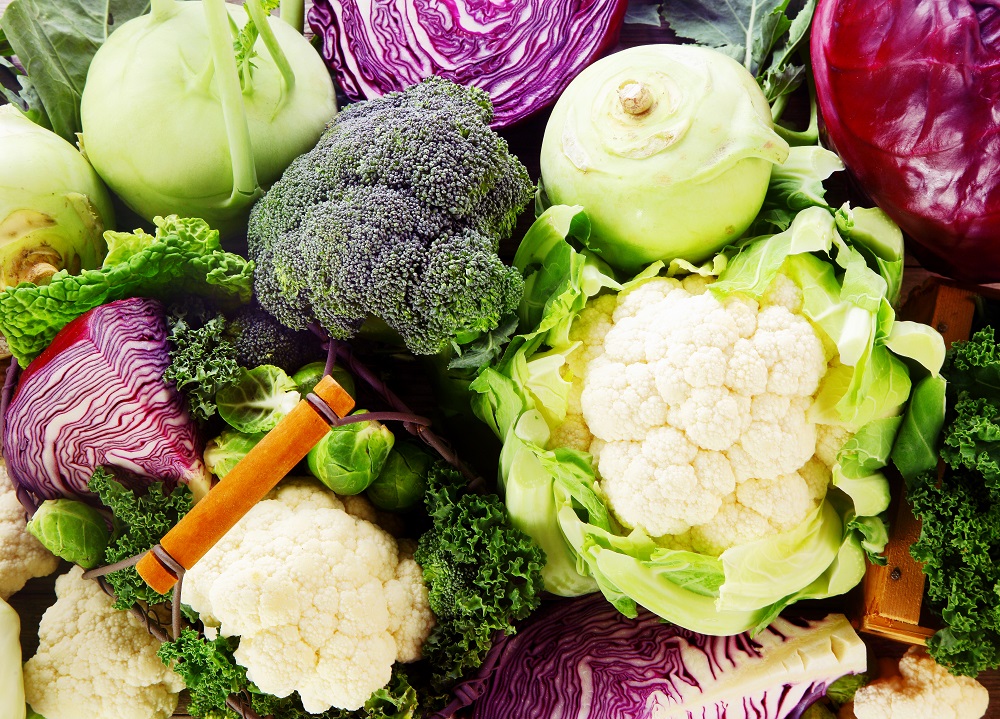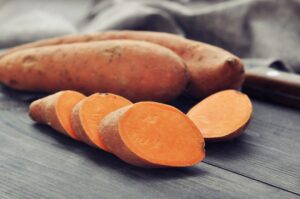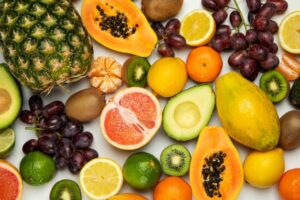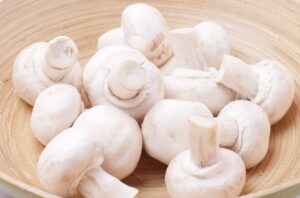Cruciferous vegetables (e.g. broccoli) are the shining star when it comes to disease prevention, especially cancer. Cruciferous vegetables contain large quantities of several anti-cancer compounds that your body needs to prevent cancer and they also help protect your brain, eye sight, reduce inflammation and manage type 2 diabetes.
In some studies, consumption of 5 servings of cruciferous vegetables, especially broccoli and cabbage, per week has been associated with up to 50% reduction in cancer risk. (1)
Let’s find out how to maximize the health benefits of cruciferous vegetables.
The power of broccoli
All cruciferous vegetables are good sources of powerful phytochemicals but some of them contain more anti-cancer molecules than others. Broccoli is the best source of the most powerful anti-cancer molecule called Sulforaphane, providing 60 milligrams of this molecule per serving. You can find even more Sulforaphane in broccoli sprouts which contain up to 100 times more of this substance than mature broccoli.
What are cruciferous vegetables?
If you’re not a fan of broccoli, other cruciferous vegetables such as cauliflower, brussel sprouts, cabbage, collards and kale include high concentrations of Sulforaphane too.
Cruciferous vegetables belong to the Brassicaceae (also called Cruciferae) family which contains more than 350 subfamilies and 3,000 species and have a long history of traditional therapeutic use in Europe. The name, cruciferous, comes from the Latin Cruciferous and relates to the cross-like shape of the flowers of these plants. Most of the common cruciferous vegetables belong to the Brassica genus which include the following vegetables:
- Broccoli
- Brussel sprouts
- Cabbage
- Cauliflower
- Collard greens
- Bok choi
- Swede (rutabaga)
- Mustard
- Tatsoi
- Turnip
- Kohlab
- Kale
How to fight cancer
The anti-cancer compound Sulforaphane increases your body’s ability to detoxify and eliminate toxic substances that can cause cancer. This is extremely important for everyday life as we get constantly exposed to toxins and chemicals in our environment, at home through cleaning products and personal care, and in food and water supply.
Sulforaphane also acts directly on cancer cells and cause their death (apoptosis). Its anti-bacterial properties are especially effective against Helicobacter pylori which contributes to developing stomach cancer (2).
Cruciferous vegetables are the number one food to include in your diet regularly to stay disease-free
Plant Oceans Nutrition Tweet
How to optimize the anti-cancer power?
It is very important that you prepare your broccoli the right way so the cancer-fighting substances are released and you can benefit from their powerful anti-cancer activity (3).
The catch is that Sulforaphane needs to be activated within the vegetable for the anti-cancer power to work. Cruciferous vegetables store their powerful phytochemicals in an inactive form (called Glucosinolates) which is their main defense system against pathogens.
Only if the broccoli’s cells are damaged by chewing or chopping, the inactive phytochemical compound is exposed to the enzyme Myrosinate which turns the chemical compound into its active form Sulforaphane.
The complication is that the enzyme Myrosinate, essential for Sulforaphane creation, is very sensitive to heat. This means, if you eat broccoli that was cooked in one piece, the enzyme’s function will get impared and Suphoropane will not be produced.
Cooking Tips
Only a small number of people like to eat raw cruciferous vegetables. This is even more true for raw brussel sprouts so we need a small workaround when we cook cruciferous vegetables.
Chop first
The good news is that you can activate the enzyme by chopping your vegetable 40 minutes before you cook them which will trigger the enzyme to create Sulforaphane. Then you can lightly steam, stir fry or oven bake your vegetable as you wish and still enjoy the full health benefits.
Avoid boiling
Just make sure to avoid boiling cruciferous vegetables as the phytochemical compounds are water soluble and they would leak in the water and you would end up with significantly less Sulforaphane. Yes the green water you discard after cooking broccoli is very very precious!!!!
The only exception to this rule is when you make soups because you consume the liquid that includes the phytochemicals leaked into the water.
Sprinkle
If you end up cooking the whole vegetable, it is not the end of the world. You can still activate Sulforaphane if you sprinkle some freshly chopped cruciferous vegetable over your cooked vegetable or you can also sprinkle mustard powder over them which will do the same trick.
Menu ideas
I always make sure that I add some cruciferous vegetable to our family lunches and dinners to maximize the protective effects of cruciferous vegetables. Below are a few examples for your inspiration.
Lunch
- Raw veggie salad of your choice with kale and broccoli sprouts and home-made dressing (Broccoli sprouts are fantastic to eat raw on salads!)
- Roasted broccoli and cauliflower quinoa salad with raisins and almonds
Sides
- Lightly steamed or oven baked broccoli, cauliflower, brussel sprouts, kale or cabbage added as a side dish to any of your dinner recipe (Chop them first before you cook them!!!)
Snacks
- Oven Baked Kale Chips
Dinner
- Vegetable Stir fry that includes cruciferous vegetables
- Creamy Cauliflower Soup
- Vegetable Bolognese Sauce with Pulse Pasta
- Higdon J, Drake V, An evidence based approach to phytochemicals and other dietary factors, 2012
- Richard Beliveau and Denis Gingras, Food to fight cancer, 2017, UK
- Michael Greger M.D., How not to die, 2015, London, UK.Th








